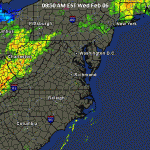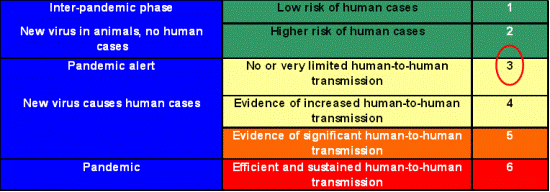 |
Archive for the ‘Alerting Systems’ Category
Tuesday, March 3rd, 2009
As winter bids us farewell with a few inches of snow and sub-freezing temperatures (increasingly rare here in central Virginia), we note that the likelihood of tornadoes will be increasing as the weather turns warmer. As they say, there is no real tornado “season,” because one can happen any time and in any place, but we see that internet searchers are looking for information on tornado preparedness more often now, so here is some information that we hope will be helpful in preparing for the tumultuous spring weather than can give birth to tornadoes and other severe storms.
As always, the Centers for Disease Control & Prevention web site offers excellent information and advice on tornadoes as part of their Emergency Preparedness and Response information, specifically their Natural Disasters and Severe Weather page. Click on the “Tornado” link for some great information on what you should know and what to do before a tornado, during and afterwards. For instance, what do you think is the most dangerous aspect of a tornado? Where is the most dangerous place to be in a tornado? The answers may surprise you!
Many states will be running tornado preparedness drills in March. Here’s the Virginia site that lists information about the state-wide drill on March 17, as well as how to run a tornado drill. Check out the information on the page about how to find the safest place inside your building to shelter from a tornado.
NOAA weather radios are wonderful to have in your building if you are in an area that is particularly vulnerable to servere storms, or you just want to keep in touch with weather events. They are available with a range of features and at a price range from $25 and up, from a variety of sources. (Amazon lists many models and prices.) Ours has alerted us several times to thunderstorms in the summer, which helped us to be prepared for possible power disruptions and wind/water damage. The NOAA radios receive information continuously from the National Weather Service, and you can set them to sound an alert to your specific area so that the alarm doesn’t sound more often than necessary. Best wishes to everyone for a safe and happy spring season!

Posted in Alerting Systems, CDC, Disaster Incidents & Hazardous Weather Outlook, Drills, Featured Web Site, Hazardous Weather, Severe Storm, Shelter in Place, Suggested Readings, Tornadoes, and Hazardous Weather Outlook | No Comments »
Wednesday, February 6th, 2008

The weather is creating news today. A powerful low pressure front is pushing through towards the Northeast from the Mississippi Valley, hitting the warm temperatures we’ve had this week, and creating some fierce thunderstorms and spawning tornadoes in Tennessee and Kentucky this morning. We’ve sent a weather alert to our staff reminding everyone of what our procedures are for responding to a tornado warning or sighting in our area:
-
Tornado warning: announce the warning is in effect, ask staff and patrons to move away from windows and exterior doors
-
Tornado sighted in the area: announce we are initiating Shelter-In-Place, and that everyone should take shelter on our basement level in the hallway. (Best shelter from a tornado: as low in the building as possible, as close to the center of the building as possible)
In addition to monitoring the weather via computers, we have an All-Hazards radio that will issue an alarm in the event of an official alert. So far, we have not had to use it, but today it may come in handy.
We hope our colleagues to the west of us have fared well today. Stay in touch!
Posted in Alerting Systems, Current Incidents and Alerts, Hazardous Weather Outlook, Shelter in Place, Tornadoes, and Hazardous Weather Outlook | No Comments »
Monday, January 21st, 2008
The Google.org foundation is funding a new non-profit project called Innovative Support to Emergencies, Diseases and Disaster (InSTEDD). Google.org’s executive director, epidemiologist Dr. Larry Brilliant, says the project hopes “to fulfill the much-needed role of an independent agent bringing the technological, medical, and organizational skills necessary to help the humanitarian aid community accomplish (early detection of public health threats and disasters), and ultimately help them to make the world a safer place.”
See: Twitter, Facebook called on for higher purpose
Posted in Alerting Systems, Computers/Networks, In the News | No Comments »
Monday, December 17th, 2007
Last spring, the University of Texas at Austin implemented a siren system to alert their university community of a direct threat. Click here for a description of the siren system from the UT Austin website.
Posted in Alerting Systems | No Comments »
Sunday, November 18th, 2007
The World Health Organization has created a six phase pandemic alert system for informing the world of the seriousness of a threat. Each alert phase triggers a series of activities to be undertaken by WHO. Click on the chart below to view the current phase of alert.

Posted in Alerting Systems, Pandemics/Epidemics | No Comments »
Wednesday, November 29th, 2006
In September, the US Senate voted overwhelmingly to approve the Warning, Alerts and Response Network (WARN) Act. The WARN Act will create a national alert system by providing Americans with emergency information sent directly to their cell phones and other wireless devices.
Posted in Alerting Systems | No Comments »
Tuesday, November 28th, 2006
“When disaster strikes, you may have only a short time to make what might be a life or death decision.”
The above quote is taken from a web page maintained by the Montgomery County Emergency Management Agency, Clarksville, Tennessee. The site explains the emergency alerting system for their area.
What alerting system exists for your area?
Posted in Alerting Systems | No Comments »
Monday, November 27th, 2006
A county just north of Charlottesville just implemented reverse 911 for alerting residents of emergency situations. Here’s the article that appeared in our local newspaper.
Posted in Alerting Systems | No Comments »
|
 |








